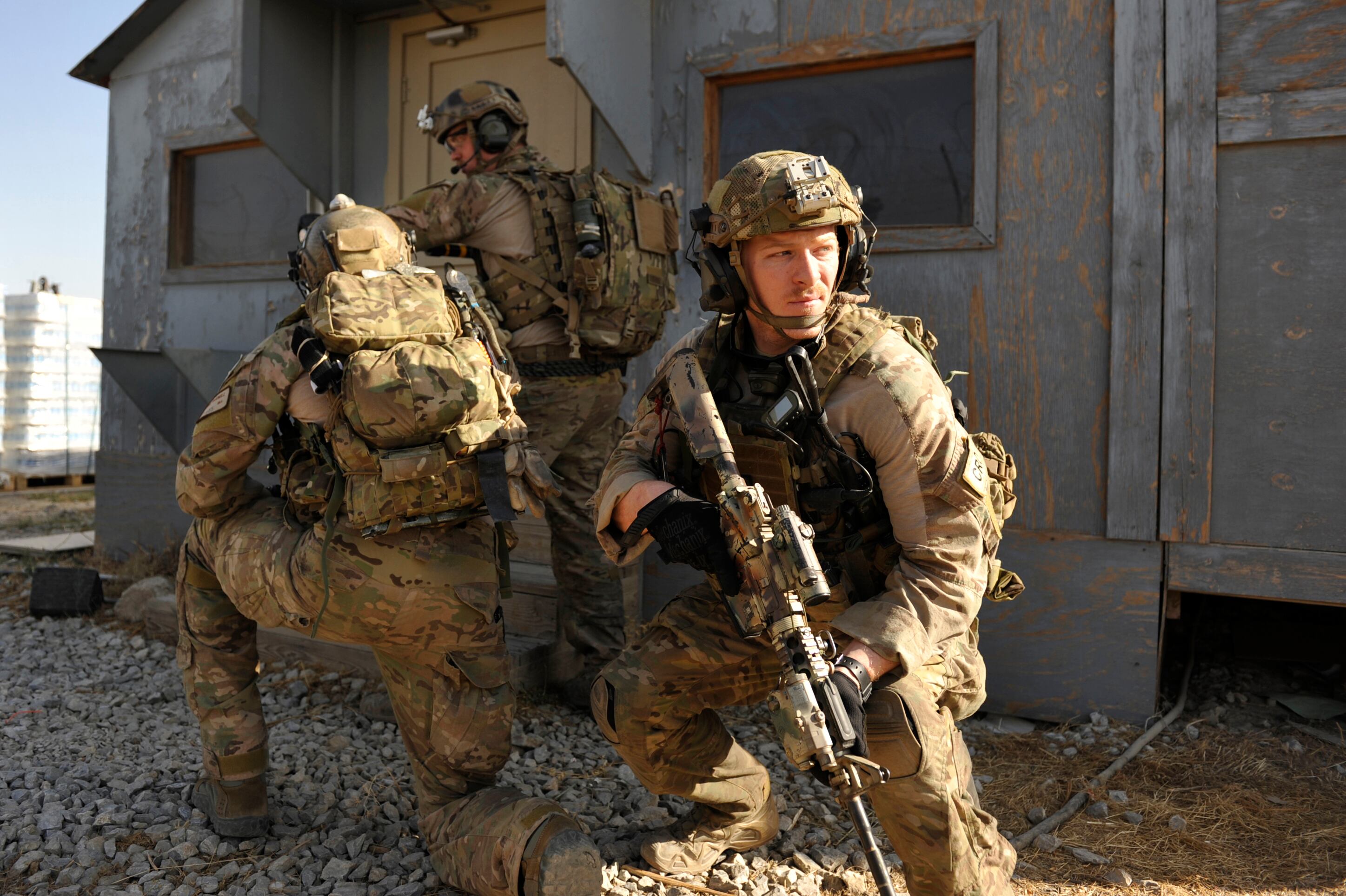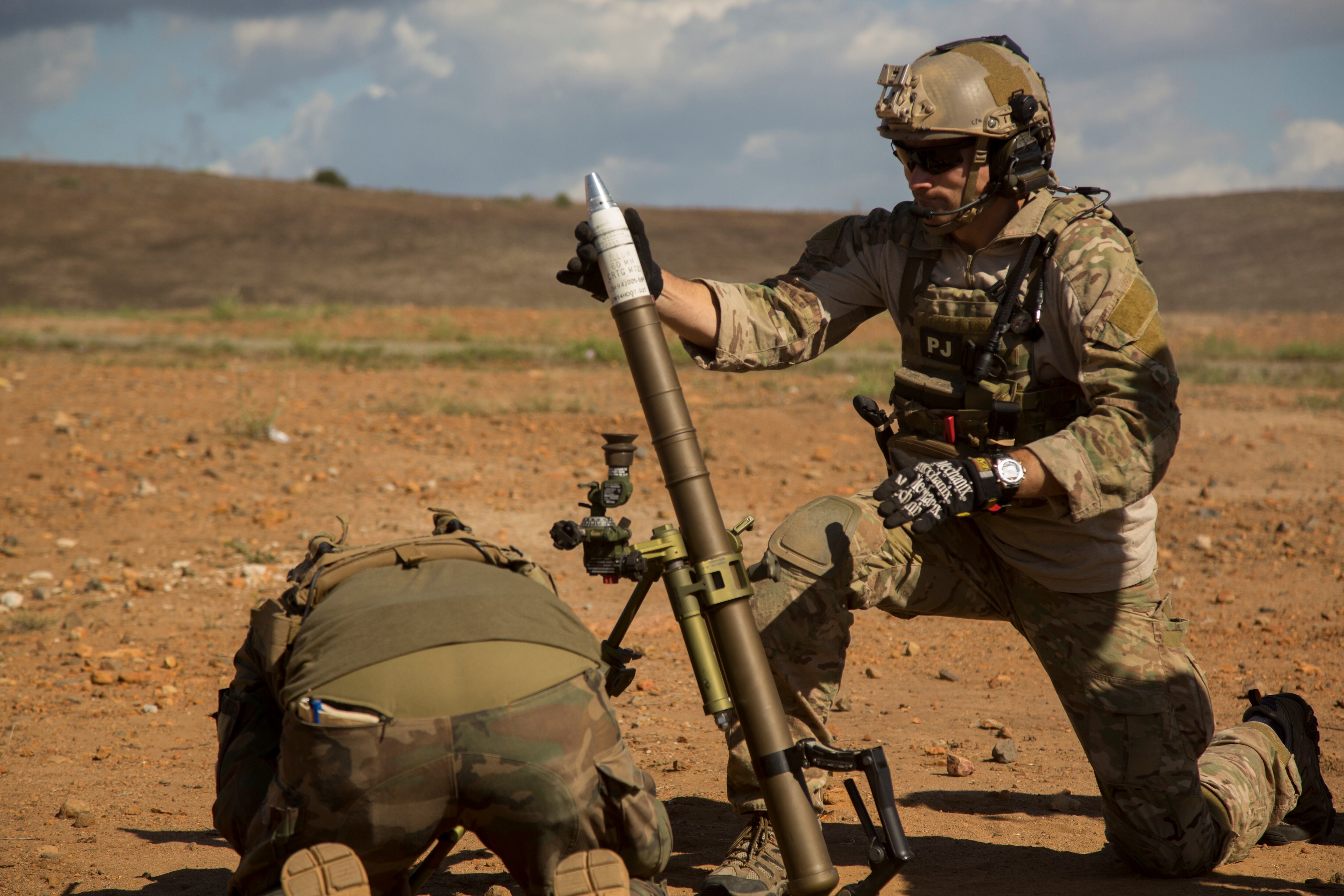ORLANDO, Fla. — After years of cuts and severe undermanning in crucial areas, the Air Force is starting to get serious about boosting its end strength — one way or another.
Top Air Force leaders are signaling their desire to grow the ranks of active-duty airmen by roughly 10,000 or more over a two-year time span. Air Force leaders want to add airmen — from current levels of 311,600 to either 321,000 or as much as 323,340 by the end of fiscal 2017.
In a March 3 Senate Armed Services Committee hearing, Air Force Secretary Deborah Lee James pointed out to lawmakers that the Air Force now has roughly 200,000 fewer airmen than it did during Operation Desert Storm — 25 years ago.
Today's Air Force is the smallest since 1948, the year after it was split off from the Army to form an independent service.
The Air Force first indicated in its 2017 budget proposal last month that staffing levels could remain flat that year, after hitting 317,000 in fiscal 2016. But at the Air Force Association's Air Warfare Symposium in Orlando, Florida last month, James said 317,000 just isn't enough, and floated the possibility of using her authority to exceed end strength caps by as much as 2 percent, or 6,340 airmen, next year.
And in early March, the Air Force sent an annual wish list to Congress that asked for $145 million to help raise its staffing levels to 321,000 next year.
Driving the Air Force's change of heart is a growing recognition that the service is being stretched too thin. Not only is the air war against the Islamic State intense and showing no sign of stopping anytime soon, but the Air Force is still supporting operations in Afghanistan. What's more, an increasing number of Air Force assets are being used to reassure European allies who are nervous about Russian aggression.

Tech. Sgt. Carlo Patalinghug, 455th Expeditionary Aircraft Maintenance Squadron crew chief, deployed from Hill Air Force Base, Utah, examines an F-16 Fighting Falcon.
Photo Credit: Tech. Sgt. Robert Cloys/Air Force
And as the Air Force is required to hold on to airframes that it had planned to divest, such as the A-10 Warthog, it needs more airmen to turn wrenches on planes both old and new.
"In reality, I think that mission demands will indicate that we need even more growth [than 317,000] in FY17," James said during her keynote address at AFA. "We have been downsizing for a long time in our Air Force, and this simply must stop. It is stopping. And now, we're in an era of a modest upsize."
James said in Orlando that her top priority is to beef up crucial career fields, such as intelligence, surveillance and reconnaissance, cyber, maintenance, and battlefield airmen — most of which have been heavily tapped as the Air Force pursues the ISIS fight.
For example, top Air Force officials have frequently aired their concerns about a shortage of maintenance airmen — particularly the most experienced 5- and 7-skill level crew chiefs and avionics airmen. Last fall, chief master sergeants in the 2A3 crew chief and flightline avionics career fields were only 84 percent manned, and chiefs in the 2A5/8/9 crew chief and flightline avionics fields were as low as 75 percent manned. Air Force officials said they start to get nervous when any field drops below 90 percent manned.
The ranks of airmen and staff sergeants in those career fields are likewise seriously undermanned. For airmen, the 2A3 career field was at 74 percent manning and the 2A5/8/9 career field was 85 percent manned last fall. And for staff sergeants, the 2A3 career field was 80 percent manned and the 2A5/8/9 career field was 89 percent manned. Technical sergeants in the 2A3 career field were also at 84 percent.
And as the Air Force has struggled to make do with a lack of seasoned maintainers, wings and commands have had to improvise to find ways to fill the gap.
Gen. Carlton Everhart, commander of Air Mobility Command, said at the AFA conference that the shortage is driving AMC to rethink who it sends out to bases in the Middle East. AMC is now required to send experienced maintainers, such as 5- and 7-level crew chiefs, overseas to U.S. Central Command bases.
But that could soon change, Everhart said. AMC is considering deploying more 3-level maintainers and pairing them up with more experienced maintainers there.
"We're taking a look at, who do we deploy out in the desert," Everhart said. "There's always a requirement in deployment to have very highly skilled folks out there. What if I happen to have a highly skilled person with someone who needs training and pair them out in the desert?"
And if AMC's plan works, that would essentially kill two birds with one stone. Not only would AMC fill a maintainer slot overseas that it might otherwise have struggled to fill, but that green maintainer also would quickly get experience that might otherwise take him years to develop.
"Would the mission get done?" Everhart said. "Sure it will. Will the mission get done as good? I think it would. So maybe we need to change the requirements of who we deploy, when. And that way when they come back, now I've got that 3 level who's really to do his test and probably test out as a 5 level because he's been turning wrenches with a 7 level."

A U.S. Air Force pilot grasps a flight control and weapons firing stick while preparing to launch a MQ-1B Predator unmanned aerial vehicle (UAV).
Photo Credit: John Moore/Getty Images
James and Chief of Staff Gen. Mark Welsh highlighted the pressures maintainers are operating under in a March 7 press conference, and said the Air Force will be focusing on them over the next few years.
"A lot of these career fields are high-demand, low-density," James said. "In the maintenance arena, because we have aging platforms and whatnot, the maintenance needs are going up. So we have thousands of maintainers in the force, but we actually need more maintainers going forward."
"We have six fleets of airplanes now over 50 years old," Welsh said. "Twenty-one or so fleets over 25 years old. It just gets tougher to keep them flying. And we see that all over the Air Force. Our maintenance folks are working hard, and when they get undermanned, retention rates start to drop and you've got to accelerate retention and training to refill the pot."
Getting to 317,000, as the Air Force says it is on track to reach by the end of the fiscal year, would help the service close many of the shortfalls in ISR, cyber, maintenance, and other key areas after the new airmen have finished their initial training, Air Force spokeswoman Rose Richeson said in a March 10 email. And if the Air Force does grow beyond 317,000 next year, those career fields are likely to continue expanding.
The Air Force's current end strength of 311,600 is up slightly from the 311,000 it had at the end of December 2015, but remains lower than any other year except 1947, the year the service was split off from the Army. That year, there were 305,827 airmen.

Air Force end strength numbers.
Photo Credit: Staff
"We think, given world demands and our reading of the situation, that there may be cause for even more [airmen] — provided that we can get the right talent," James told Sen. Jim Inhofe, R-Okla., in the March 3 hearing.
To do that, James could rely on an already-existing authority that allows the Air Force secretary to go as much as 2 percent over end strength limits. The last time the Air Force used this authority was in fiscal 2013, when it went about 1,200 airmen over end strength limits due to higher-than-expected retention, Richeson said.
When asked why James was considering using this authority instead of requesting such an end strength increase during the normal budget process, Richeson said that the authority "would be required only if the service achieves strength levels higher than what is authorized in the FY17 National Defense Authorization Act."
"While the Bipartisan Budget Act provides temporary relief from the Budget Control Act, tough choices were still required to live within BBA funding levels," Richeson continued. "In order to maintain a delicate balance between capability, capacity and readiness, the Air Force was unable to fund additional end strength in the FY17 president's budget submission."
But it's far from certain that she will. While James already has the authority to exceed end strength limits, there's a catch: She would have to ask Congress for authority to reprogram funds to pay for those additional airmen.
When asked where the additional funds could be reprogrammed from, Richeson said the Air Force would make that decision during 2017, if necessary.
"The amount of funding would depend on a variety of factors, including the additional end strength needed, the officer/enlisted grade mix and the timing of when personnel would be brought on board," Richeson said.
In a March 4 email, SASC spokesman Dustin Walker declined to comment on whether Congress would likely grant a hypothetical request from the Air Force to reprogram funds to increase end strength.
And there's an even trickier caveat: James' desire to boost end strength levels will also depend on whether the Air Force can find enough qualified people to fill the necessary jobs.

U.S. Air Force Capt. Cameron Rochelle, 83rd Expeditionary Rescue Squadron combat rescue officer, watches for potential threats as his teammates breech a door during a mission rehearsal.
Photo Credit: Maj. Brandon Lingle/Air Force
But those specialized airmen take time to develop. For example, newly-enlisted young airmen could take five to seven years to develop into the kind of experienced maintainers the Air Force needs to keep its fighters and bombers in the air.
At a March 7 news conference, James said that the Air Force is prepared to use an "all of the above" strategy to boost those career fields, including increasing opportunities for airmen to retrain into vital jobs and allowing more guardsmen and reservists to go active duty. Richeson said the Air Force plans to use the Voluntary Limited Period of Active Duty program to temporarily move reservists into active duty.
The Air Force plans to continue bringing departed airmen back on board through its prior service accession program in 2016 and 2017. And it is allowing some experienced airmen with vital skills to stay on longer before being made to separate, by expanding eligibility for high year tenure, or "up or out," extensions from 38 career fields to 122 jobs in 2016.
In recent years, the Air Force has approved massive incentives to hold on to key airmen. For example, last September the Air Force approved critical skills retention bonuses of up to $125,000 for certain senior non-commissioned officer pararescuemen — a vital battlefield airman job. The Air Force is also offering initial enlistment bonuses of up to $15,000 for new recruits who sign up to be PJs, combat controllers, and Tactical Air Control Party airmen — all battlefield jobs — as well as bonuses worth $7,000 apiece for newly-recruited intelligence fusion analysts.
And the Air Force this year nearly tripled the number of career fields eligible for selective re-enlistment bonuses, which could be worth as much as $90,000. Among the 117 jobs eligible for those re-up bonuses are PJs, TACPs, combat controllers, and a wide variety of maintainers specializing in drones, fighter aircraft, bombers and helicopters.
Last summer, the Air Force released a list of 45 jobs first-term airmen can retrain into, which included several battlefield and intelligence jobs. Some of those retraining opportunities included TACPs, combat controllers, airborne ISR operators, airborne cryptologic language analysts, signals intelligence analysts, and geospatial intelligence analysts.

A U.S. Air Force Pararescue Jumper prepares to fire a 60 mm mortar round during a Company Collective Exercise aboard Marine Corps Base Camp Pendleton, Calif.
Photo Credit: Cpl. Steven Fox/Marine Corps
But there were no maintenance jobs among last year's list of those eligible for retraining. That could potentially change as the Air Force increases its focus on maintainers.
James also said the Air Force plans to ramp up its recruiting and training efforts to handle the potential influx of new airmen.
"After 20-some years of downsizing in our Air Force, in order to now grow modestly, we need to infuse resources into both the recruiting corps and into the technical training base, so that we can go out and attract the right kind of talent and then get them trained in the appropriate skills," James said.
James said the Air Force will also continue offering incentives to increase the retention of experienced airmen while new recruits get up to speed.
"When you're recruiting more and retaining more, together, that is how you grow," James said. "Provided we can get that right talent, between the retention and the recruiting aspect, we could grow some more, and I think we need to in FY17, at which point we would go back and ask Congress to consider a reprogramming action."
Stephen Losey is the air warfare reporter for Defense News. He previously covered leadership and personnel issues at Air Force Times, and the Pentagon, special operations and air warfare at Military.com. He has traveled to the Middle East to cover U.S. Air Force operations.





